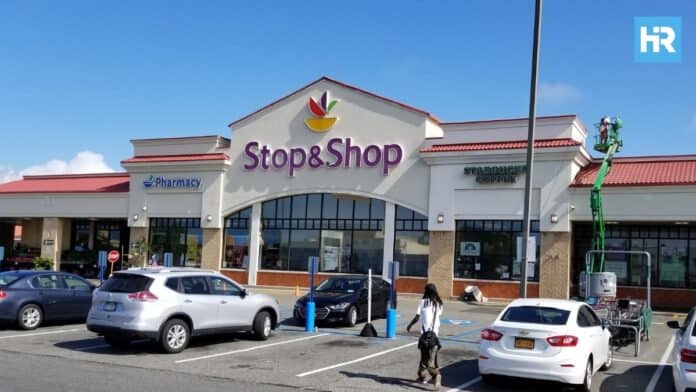As of November 2, 2024, Stop & Shop completed the permanent closure of 38 stores across five states in the Northeast.
This decision was part of a larger plan to focus on the chain’s strongest stores, offer better prices, and update more locations to keep shoppers happy.
Although Stop & Shop still has over 350 locations open, many shoppers feel the impact of these closed stores and wonder what’s next.
Here’s a rundown of why these closures happened, which areas were affected, and what Stop & Shop has planned to help it stay relevant and keep customers happy.
- Stop & Shop officially closed 38 stores across five states by November 2, 2024, to focus on better-performing stores.
- The closures were part of a plan to offer lower prices and update stores for a better shopping experience.
- Affected employees were given chances to work at other Stop & Shop locations, and the remodeled stores are designed to keep regular shoppers coming back.
Why Did Stop & Shop Close These Stores?
Stop & Shop closed these stores to focus on performing locations and make improvements where they could make a difference.
Since 2018, they’ve renovated over 190 stores, adding more self-checkout options, energy-saving fridges, wider aisles, and even fancy new food counters with treats like buffalo tenders and pepperoni flatbreads.
By investing in these updates, Stop & Shop aimed to stay competitive with big players like Walmart, Target, and Aldi.
Each of the 38 stores was chosen to close based on a few factors, such as sales performance, nearby competition, and lease terms.
For the employees affected by the closures, Stop & Shop has promised to offer jobs at other nearby locations so they won’t be left in the dark.
Which Locations Closed?
The 38 closed stores were spread across five states where Stop & Shop operates.
Here’s a list of affected areas:
- Connecticut: Ansonia, Torrington, Stamford, Milford, Danbury
- Massachusetts: Brockton, Raynham, Plymouth, Shrewsbury, Newton, Springfield, Worcester, Pembroke
- New Jersey: Edison, South Edison, Howell, Phillipsburg, Piscataway, Carlstadt, Franklin Township, Ringwood
- New York: Brooklyn, Greenvale, West Haverstraw, Coram, Hempstead, Mt. Vernon
- Rhode Island: Johnston, Providence
Though November 2 was the final deadline for closures, some of these stores closed earlier due to low performance or high costs.
Stop & Shop did its best to inform customers about exact closing dates to make the transition easier.
How Did the Community React?
As expected, the news of these closures brought out different reactions from the community.
Many loyal customers felt the loss of their local Stop & Shop, especially in areas where they relied on it for their weekly grocery runs.
Some expressed surprise that the stores lasted as long as they did, particularly in areas with high competition from nearby Target and Walmart.
And it was hard for many to see the doors close on a store they had used for years.
Others were eager to try different stores nearby that offer lower prices or a faster shopping experience, with many pointing to alternatives like Walmart, Target, or Aldi as options they’d now consider for their grocery needs.
Stop & Shop’s Future Strategy
After closing these stores, Stop & Shop planned to focus more on upgrading its remaining stores and offering customers a better experience.
For a brand that has existed for over a century, Stop & Shop has had to keep up with new challenges and competitors.
Alongside physical upgrades like wider aisles and expanded food sections, Stop & Shop has aimed to bring in more budget-friendly promotions to help shoppers.
They introduced deals like 99-cent offers and digital coupons to make grocery shopping easier on the wallet.
Stop & Shop also continued partnerships with delivery services like Instacart and DoorDash, so customers could shop online if they preferred.
The company set aside a $1 billion budget to roll out these changes over the next four years, hoping these updates would help bring back loyal customers.
Facing Strong Competition
Stop & Shop faces a lot of competition in today’s grocery market.
Other stores, like Big Y and Roche Brothers, bring a different shopping experience that some customers prefer, while discount stores like Aldi and BJ’s are gaining popularity for their lower prices.
Analysts noted that Stop & Shop has had to make tough decisions over the years to control costs, such as cutting back on fresh-cut meats and seafood services.
Nonetheless, this made it harder for them to compete in variety and service.
The grocery chain has also dealt with challenges in recent years.
A major strike in 2019 involving 31,000 Stop & Shop workers led to big sales losses, and shortly afterward, the COVID-19 pandemic brought challenges to the supply chain and operations.
As you can imagine, this affected Stop & Shop’s performance, and it has since had to work hard to keep up with a changing market.
What’s Next for Stop & Shop?
Now that the closures have taken place, Stop & Shop is looking to make a fresh start by focusing on store remodels and customer-friendly pricing.
They planned to improve their remaining stores by creating a more inviting layout, adding new food options, and speeding up the checkout experience.
The company hopes these changes will bring back customers and show that Stop & Shop is still committed to meeting shoppers’ needs.
Moving forward, Stop & Shop will likely keep adjusting its business to stay competitive.
The company hopes to remind people why Stop & Shop has been a grocery favorite for so long by improving stores and continuing to offer promotions.
With over 350 stores remaining, Stop & Shop is working to make sure it remains a top choice for shoppers in the Northeast.






